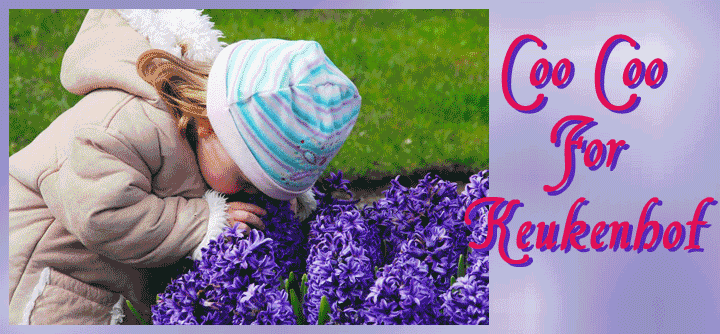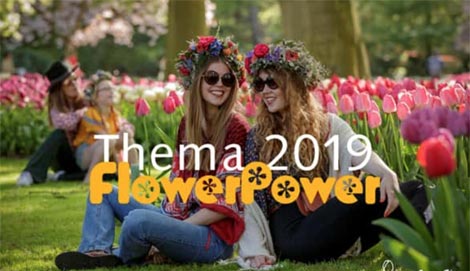
Snow continues to visit us in the northeast, but our
trustiest weatherman, the groundhog, has forecast an early spring, so
we should soon be amid a flurry of flowers rather than snowflakes. The
promise of warm weather couldn’t come at a better time, too, with
the month of love already underway and the desire for fresh-cut flowers
only growing.
This is also that time of year when the favorite story
is who flew how many flowers for the romance of Valentine’s Day
(Thursday, February 14) or upcoming Eastertide on Sunday, April 21, 2019.
As an avid knitter, there are two things that entice
me most: texture and color. I have a habit of appreciating combinations
of color and texture that might go unnoticed by non-knitters, and it’s
a habit I know I share with my knitting brethren. Piet Mondrian’s
famous blocks of color have found their way into a blanket for my father;
the crystalline, chameleonic Blue Pond of Hokkaido, Japan, will eventually
inspire a neck-hugging cowl in my collection.
It has long been a dream of mine to visit Keukenhof
in the Netherlands. The famous ‘Garden of Europe’ is a fount
of inspiration for anyone working with color, texture, and pattern. With
over 7 million flower bulbs planted across 79 acres, Keukenhof has hosted
over 50 million global visitors since opening. It hosts several garden
types, from a classic English landscape garden to a meditative Japanese
country garden, and every year it designs seven new inspiration gardens
to delight and intrigue new visitors.
When most people think of flowers and the Netherlands,
they think of the iconic image of thickly striped rows of tulips forming
a Missoni-like rainbow of color composition. The tulip, more than any
other flower, has come to symbolize the Netherlands. And nothing augurs
the coming spring more than the tulip. Planted while the world is still
cold and dark, tulips are the manifestation of a prayer for warm weather,
a supplication to the earth for sunny days. It should come as no surprise,
then, that in the tulip’s native Arabic tongue, its name is composed
of the same letters that form the word ‘Allah.’
We talk about perishables in air cargo, referring to
food, plants, pharmaceuticals, but laypeople tend to forget that most
goods aren’t ubiquitous throughout the world—that certain
goods were birthed in places far flung from where they now reside, and
tulips are no exception.
Tulips worked in cargo far, far before anyone reading
this. Perhaps not air cargo, but still. Tulip cultivation dates back to
10th century Persia, with extensive cultivation efforts occurring throughout
the Ottoman Empire. They originated, however, as a wildflower in Central
Asia. While ‘the flower shop of the world’ holds festivals
in honor of the tulip, tulips are, in fact, not Dutch at all. The word
tulip is loosely translated from the Ottoman Turkish word tülbend
to the Persian word delband, which means ‘turban’—an
association assumed to be derived by the similarity in shape between the
turban and the tulip.
  Tulips
came to the Netherlands by way of the Flemish botanist Carolus Clusius.
In 1593, Carolus became the Chair of Botany at the Hortus Botanicus at
the University of Leiden. The University gave Carolus a small plot of
land (no more than 40 meters squared) behind the Academy in which to grow
plants for the purpose of medical students’ studies. It was one
of the earliest botanical gardens, and certainly one of the most influential
moments in Dutch history. Having obtained tulip bulbs from a friend—Ogier
Ghiselain de Busbecq, the ambassador of Constantinople—Carolus cultivated
the first Dutch tulips in 1594. The curved, gorgeously seductive flowers
soon exploded in popularity—at the time, no other European flower
had the same concentration of color or uniqueness of shape. Eventually,
Carolus’ entire garden of tulips was raided for the bulbs. Tulips
came to the Netherlands by way of the Flemish botanist Carolus Clusius.
In 1593, Carolus became the Chair of Botany at the Hortus Botanicus at
the University of Leiden. The University gave Carolus a small plot of
land (no more than 40 meters squared) behind the Academy in which to grow
plants for the purpose of medical students’ studies. It was one
of the earliest botanical gardens, and certainly one of the most influential
moments in Dutch history. Having obtained tulip bulbs from a friend—Ogier
Ghiselain de Busbecq, the ambassador of Constantinople—Carolus cultivated
the first Dutch tulips in 1594. The curved, gorgeously seductive flowers
soon exploded in popularity—at the time, no other European flower
had the same concentration of color or uniqueness of shape. Eventually,
Carolus’ entire garden of tulips was raided for the bulbs.
By the early to mid 1600s, tulips had become so popular that
they created the first economic bubble, a period known as “Tulipomania.”
Because it takes 7-12 years to cultivate a tulip from seed to bulb, and
because certain tulips, having contracted viruses, began to display extraordinarily
unique striped patterning, tulips began selling for more than what most
skilled laborers earned in a year. They became a commodity and a status
symbol and were so popular and inflated in price, for a brief period before
the bubble burst, they actually served as currency.
 By the mid 1630s, tulips were
a staple export—one of the Netherland’s most precious pieces
of cargo. Despite the bubble having burst, the tulip still enjoys this
position today. By the mid 1630s, tulips were
a staple export—one of the Netherland’s most precious pieces
of cargo. Despite the bubble having burst, the tulip still enjoys this
position today.
As a knitter, one of the supreme joys of making something
comes from seeing how the stitches add up, stacking atop one another,
to form what was just utterly formless. That a simple piece of string
should wind around itself and, in the smallest increments, stitch by stitch,
become a portrait of creation in its most basic form. Every year, the
Keukenhof performs the same feat with tulips, planting colorfully coordinated
bulbs in careful arrangements to form a flower mosaic.
This year, Flower Power is Keukenhof’s 2019 theme.
Flower Power with its early 1970s vibe is a great theme, for celebrating
the 70th Keukenhof. Flower Power, the strength of flowers!
Flossie Arend
Keukenhof opens March 3, 2019, for more click here. |




 Vol.
18 No. 9
Vol.
18 No. 9